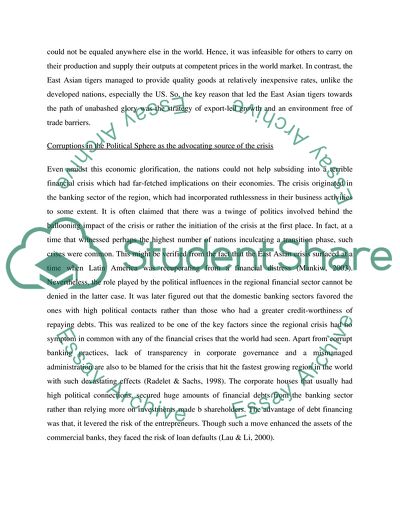Cite this document
(“East Asian Financial Crisis Essay Example | Topics and Well Written Essays - 2750 words”, n.d.)
East Asian Financial Crisis Essay Example | Topics and Well Written Essays - 2750 words. Retrieved from https://studentshare.org/finance-accounting/1563666-east-asian-financial-crisis
East Asian Financial Crisis Essay Example | Topics and Well Written Essays - 2750 words. Retrieved from https://studentshare.org/finance-accounting/1563666-east-asian-financial-crisis
(East Asian Financial Crisis Essay Example | Topics and Well Written Essays - 2750 Words)
East Asian Financial Crisis Essay Example | Topics and Well Written Essays - 2750 Words. https://studentshare.org/finance-accounting/1563666-east-asian-financial-crisis.
East Asian Financial Crisis Essay Example | Topics and Well Written Essays - 2750 Words. https://studentshare.org/finance-accounting/1563666-east-asian-financial-crisis.
“East Asian Financial Crisis Essay Example | Topics and Well Written Essays - 2750 Words”, n.d. https://studentshare.org/finance-accounting/1563666-east-asian-financial-crisis.


